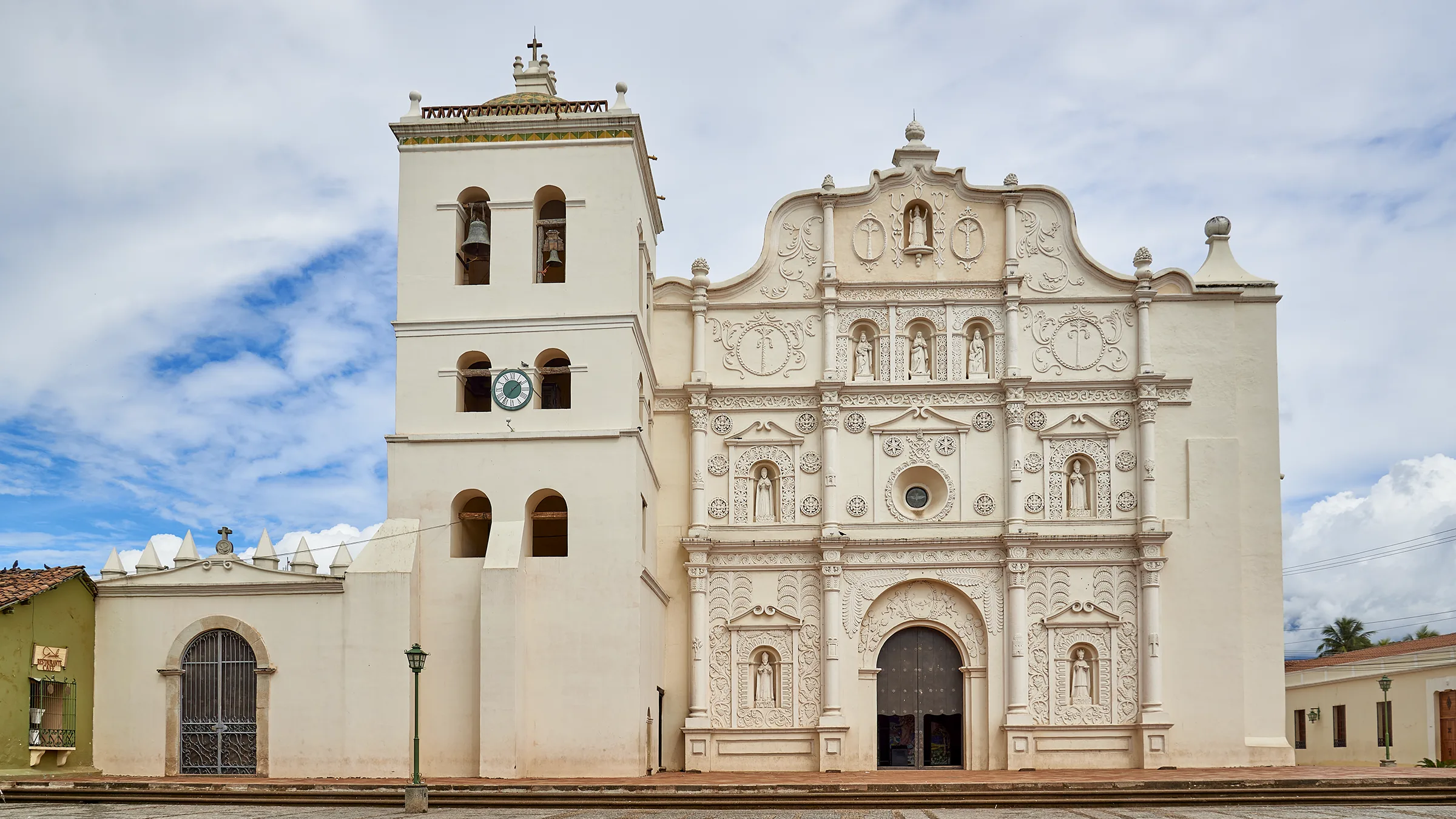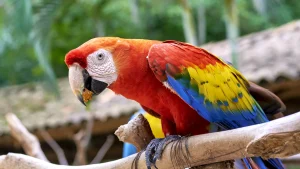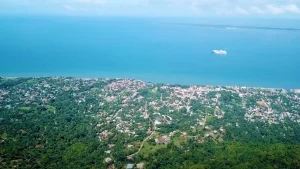Tourism in Comayagua

Santa María de La Nueva Valladolid de Comayagua, or simply Comayagua, was founded by order of the advance of Yucatán, Don Francisco de Montejo, who recommended to his captain Don Alonso de Cáceres that he found a town in a place that was equidistant from the two oceans. and between Guatemala and León, Nicaragua.
Thus, on December 8, 1537, on behalf of the King of Spain Carlos I and María Santísima de la Concepción, I took possession of the north side of the city.
King Felipe II gave it the title of city in 1557. Its strategic position allows it to become the seat of ecclesiastical power, civil power, economic center and cultural center in a few years.

Today, Comayagua is a city with very easy access. The main highway of the country passes through one side of the city, conveniently communicating it with the cities of Tegucigalpa (about 80 km away to the south) and San Pedro Sula (about 140 km away to the north).
Located at an approximate height of 550 meters above mean sea level and in the center of an extensive valley, surrounded by majestic mountains, Comayagua offers a warm climate that refreshes pleasantly at night.
The city is built according to the old Spanish system, based on a central square drawn in squares, it has several constructions that keep a rich history of the past of Honduras. The Cathedral, the churches of La Merced, La Caridad, San Francisco and San Sebastián stand out, as well as the headquarters of the Bishopric and the headquarters of the Museum of Archeology of Comayagua, which in its time was the Presidential House, the National Congress and the Palace of Justice of the Supreme Court of Justice.
See location of Comayagua on the Map
The house where José Trinidad Cabañas was born, as well as the one that Francisco Morazán lived in, are now national monuments that are being preserved.
An ambitious project sponsored by the cooperation program of Spain, the Municipality of Comayagua, the Honduran Institute of Anthropology and History and the government of the nation has begun to bear fruit by rescuing the colonial architectural legacy that the city possesses. The central square has just been totally remodeled and is perhaps the most beautiful in the country. Likewise, the facades of most of the houses and buildings in the historic center have been modified according to a master plan, managing to restore the original atmosphere of the city. The signage of the shops is another aspect that can be seen as a result of this project.
The Plaza de La Merced is currently being remodeled and a restoration of the Comayagua Cathedral Church is planned to begin later this year. Consequently, this beautiful temple is closed for the time being. Perhaps the most outstanding aspect of the city as a tourist attraction, in addition to its rich colonial architecture and its museums, is the traditional celebration of Holy Week.
The celebration begins on Palm Sunday and ends on Easter Sunday. During this period of time, the city engages in a process of contemplation for the passion of Christ and carries out a series of processions, some with a unique character. Undoubtedly, the most attractive event is the production of sawdust rugs that is carried out in the streets of the city to prepare and make the path to the cross more pleasant for Jesus Christ.
For this, more than 20 carpets are made, which are a personal effort of several families and institutions that have been carrying out this magnificent artisan work for years, whose value is equivalent to that which can be observed in the city of Antigua, Guatemala during the same Week. Santa Among the most outstanding processions, we can list the following:
Palm Sunday:
At 8:00 AM a very particular procession begins, which reminds us of the triumphal entry of Jesus into Jerusalem, which is called the Lord of the Burrita, in it an image of Jesus, in natural size, which has the peculiarity of having gonses in the extremities which allow him to be seated on a flesh and blood donkey, thus Jesus walks triumphantly through the streets of the city, accompanied by a crowd that happily waving tender olive palms. The happy music of the band adds a harmonic touch to the joyous procession.
Holy Thursday: «The Last Supper»:
In the San Francisco church there is a representation of the Last Supper of the Lord.
Arrest Procession:
Starting at 10:30 pm, the massive Arrest Procession begins, in it the Nazareno de la Merced, dressed in white, blindfolded, and to the beat of gloomy marches, passes very slowly through the city. The parishioners carry thousands of candles that set the stage for the procession, entering the cathedral until the early hours of the morning.
Holy Friday:
After almost three months of preparations at midnight, the carpet artisans begin a titanic and marathon day of work of up to ten hours in the Via Crucis street, by nine in the morning a total of twenty-four carpets can be seen of dyed sawdust. Their lives are ephemeral since at 10:30 p.m. the procession of the Via Crucis passes through these carpets, irreparably destroying them.
Procession of the Via Crucis:
It is one of the most solemn processions, it begins at 10:30 pm, starting from the church of San Francisco, going through the streets that have been decorated with the multicolored dyed sawdust carpets. It represents the fourteen stations, illustrated by means of live pictures. The procession concludes in the cathedral with the act of the crucifixion.
Procession of the Holy Burial:
Part of the cathedral at 5:00 pm, a Christ deposited in a beautifully decorated urn, will tour the city again, is accompanied by seven very little girls dressed as angels who carry signs that contain the seven phrases said by Jesus before dying. . Six more girls, also dressed as angels, escort the urn. The parishioners light thousands of candles at dusk, finally the procession enters the cathedral at 9:00 p.m.
Easter Sunday:
Procession of the Resurrected: It leaves at 8:00 am from the Caridad Church, in it images of the Virgin Mary represented by a Sorrowful One, Mary Magdalene, Veronica, Saint John and Saint Peter, they search for Christ in the city, one block Before reaching the cathedral, Magdalena goes ahead and finds the image of the Risen Jesus that, moving very slowly, leaves the cathedral.
The Magdalena hurriedly returns to warn those who have been left behind, one by one, she does the routine of walking up to the risen one, greet him with a bow and return to warn the others Comayagua Santa María de La Nueva Valladolid de Comayagua, or simply Comayagua, was founded by order of the advance of Yucatan, Don Francisco de Montejo, who recommended to his captain Don Alonso de Cáceres that he found a town in a place that was equidistant from the two oceans and between Guatemala and León, Nicaragua.
Thus, on December 8, 1537, on behalf of the King of Spain Carlos I and María Santísima de la Concepción, I took possession of the north side of the city. King Felipe II gave it the title of city in 1557. Its strategic position allows it to become the seat of ecclesiastical power, civil power, economic center and cultural center in a few years. After the Independence of Spain, in 1821, it became the capital.
Today, Comayagua is a city with very easy access. The main highway of the country passes through one side of the city, conveniently communicating it with the cities of Tegucigalpa (about 80 km away to the south) and San Pedro Sula (about 140 km away to the north.
Located at an approximate height of 550 meters above mean sea level and in the center of an extensive valley, surrounded by majestic mountains, Comayagua offers a warm climate that refreshes pleasantly at night.
The city is built according to the old Spanish system, based on a central square drawn in squares, it has several constructions that keep a rich history of the past of Honduras. The Cathedral, the churches of La Merced, La Caridad, San Francisco and San Sebastián stand out, as well as the headquarters of the Bishopric and the headquarters of the Museum of Archeology of Comayagua, which in its time was the Presidential House, the National Congress and the Palace of Justice of the
Supreme Court of Justice.
The house where José Trinidad Cabañas was born, as well as the one that Francisco Morazán lived in, are now national monuments that are being preserved.
An ambitious project sponsored by the cooperation program of Spain, the Municipality of Comayagua, the Honduran Institute of Anthropology and History and the government of the nation has begun to bear fruit by rescuing the colonial architectural legacy that the city possesses. The central square has just been totally remodeled and is perhaps the most beautiful in the country. Likewise, the facades of most of the houses and buildings in the historic center have been modified according to a master plan, managing to restore the original atmosphere of the city. The signage of the shops is another aspect that can be seen as a result of this project.
The Plaza de La Merced is currently being remodeled and a restoration of the Comayagua Cathedral Church is planned to begin later this year. Consequently, this beautiful temple is closed for the time being.
Perhaps the most outstanding aspect of the city as a tourist attraction, in addition to its rich colonial architecture and its museums, is the traditional celebration of Holy Week. The celebration begins on Palm Sunday and ends on Easter Sunday. During this period of time, the city engages in a process of contemplation for the passion of Christ and carries out a series of processions, some with a unique character. Undoubtedly, the most attractive event is the production of sawdust rugs that takes place in the streets of the city to prepare and make the path to the cross more pleasant for Jesus Christ. For this, more than 20 carpets are made, which are a personal effort of several families and institutions that have been doing this magnificent artisan work for years.whose value is equivalent to that which can be observed in the city of Antigua, Guatemala during the same Holy Week. Among the most outstanding processions, we can list the following: Palm Sunday: At 8:00 AM a very particular procession begins, which reminds us of the triumphal entry of Jesus into Jerusalem, which is called by the Lord of the Donkey, in it an image of Jesus, in natural size, which has the peculiarity of having gonces in the extremities which allow it to be seated on a flesh and blood donkey, so Jesus walks triumphantly through the streets of the city, accompanied by a crowd that happily waving tender olive palms. The happy music of the band adds a harmonic touch to the joyous procession.Among the most outstanding processions, we can list the following: Palm Sunday: At 8:00 AM a very particular procession begins, which reminds us of the triumphal entry of Jesus into Jerusalem, which is called by the Lord of the Donkey, in it an image of Jesus, in natural size, which has the peculiarity of having gonces in the extremities which allow it to be seated on a flesh and blood donkey, so Jesus walks triumphantly through the streets of the city, accompanied by a crowd that happily waving tender olive palms. The happy music of the band adds a harmonic touch to the joyous procession.Among the most outstanding processions, we can list the following: Palm Sunday: At 8:00 AM a very particular procession begins, which reminds us of the triumphal entry of Jesus into Jerusalem, which is called by the Lord of the Donkey, in it an image of Jesus, in natural size, which has the peculiarity of having gonces in the extremities which allow it to be seated on a flesh and blood donkey, so Jesus walks triumphantly through the streets of the city, accompanied by a crowd that happily waving tender olive palms. The happy music of the band adds a harmonic touch to the joyous procession.which is called the Lord of the Burrita, in it an image of Jesus, in natural size, which has the peculiarity of having gonces in the extremities which allow him to be seated on a flesh and blood donkey, thus Jesus walks triumphantly through the streets of the city, accompanied by a crowd cheerfully waving tender olive palms. The happy music of the band adds a harmonic touch to the joyous procession.which is called the Lord of the Burrita, in it an image of Jesus, in natural size, which has the peculiarity of having gonces in the extremities which allow him to be seated on a flesh and blood donkey, thus Jesus walks triumphantly through the streets of the city, accompanied by a crowd cheerfully waving tender olive palms. The happy music of the band adds a harmonic touch to the joyous procession.
Holy Thursday:
«The Last Supper»: In the San Francisco church there is a representation of the last supper of the Lord. Arrest Procession: Starting at 10:30 pm, the massive Arrest Procession begins, in it the Nazareno de la Merced, dressed in white, blindfolded, and to the beat of gloomy marches, passes very slowly through the city. The parishioners carry thousands of candles that set the stage for the procession, entering the cathedral until the early hours of the morning.
Holy Friday:
After almost three months of preparations at midnight, the carpet artisans begin a titanic and marathon day of work of up to ten hours in the Via Crucis street, by nine in the morning a total of twenty-four carpets can be seen of dyed sawdust. Their lives are ephemeral since at 10:30 p.m. the procession of the Via Crucis passes through these carpets, irreparably destroying them.
Procession of the Via Crucis:
It is one of the most solemn processions, it begins at 10:30 pm, starting from the church of San Francisco, going through the streets that have been decorated with the multicolored dyed sawdust carpets. It represents the fourteen stations, illustrated by means of live pictures. The procession concludes in the cathedral with the act of the crucifixion.
Procession of the Holy Burial:
Part of the cathedral at 5:00 pm, a Christ deposited in a beautifully decorated urn, will tour the city again, is accompanied by seven very little girls dressed as angels who carry signs that contain the seven phrases said by Jesus before dying. . Six more girls, also dressed as angels, escort the urn. The parishioners light thousands of candles at dusk, finally the procession enters the cathedral at 9:00 p.m.
Easter Sunday:
Procession of the Resurrected: It leaves at 8:00 am from the Caridad Church, in it images of the Virgin Mary represented by a Sorrowful One, Mary Magdalene, Veronica, Saint John and Saint Peter, they search for Christ in the city, one block Before reaching the cathedral, Magdalena goes ahead and finds the image of the Risen Jesus that, moving very slowly, leaves the cathedral. La Magdalena hurriedly returns to warn those who have been left behind, one by one, she goes through the routine of walking up to the risen one, greeting him with a bow and warning the others again.
Finally, Mary at one end and Jesus at the other, walk slowly until they meet in the middle of the block, they greet each other reverently, then to the beat of a triumphant march of the ringing of the bells, the images are placed across the street and they move symmetrically in this position until entering the cathedral where the mass will begin.




